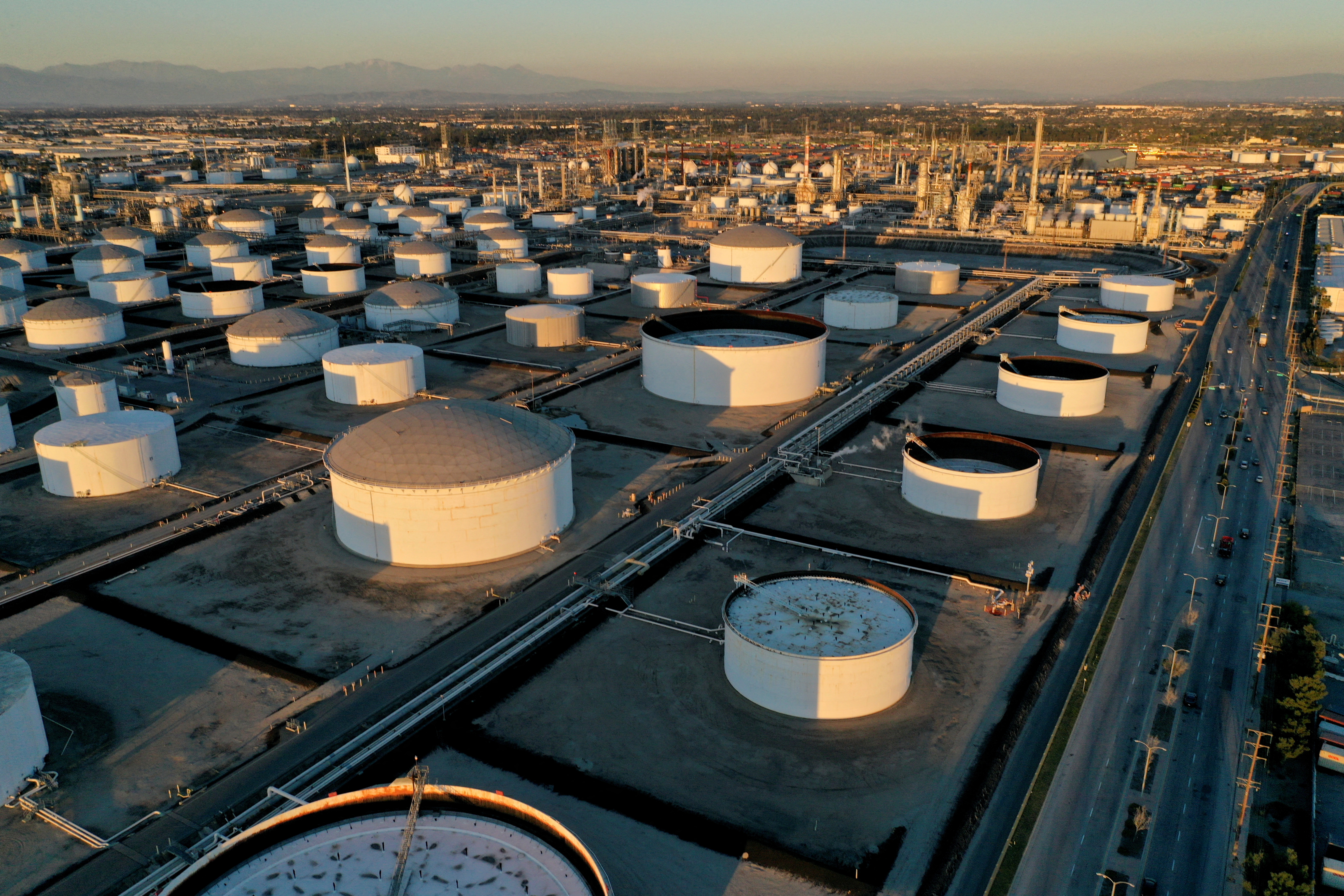HOUSTON, March 31 (Reuters) – U.S. oil prices fell 7% to close just above $100 on Thursday as President Joe Biden announced the largest ever release from the U.S. Strategic Petroleum Reserve and called on oil companies to increase drilling to boost supply.
U.S. West Texas Intermediate futures for May delivery settled down $7.54, or 7%, at $100.28 a barrel, after touching a low of $99.66.
Brent crude futures for May, which expired on Thursday, closed down $5.54, or 4.8%, at $107.91 a barrel. The more actively traded June futures were down 5.6% at $105.16, after falling by $7 earlier in the session.
Register now for FREE unlimited access to Reuters.com
Both benchmarks posted their highest quarterly percentage gains since the second quarter of 2020, with Brent soaring 38% and WTI gaining 34%, boosted mainly after Russia’s Feb. 24 invasion of Ukraine which Moscow calls a “special operation.”
“This is a market where every barrel counts and (the SPR release) is a significant volume of oil to be put on the market for an extended period of time,” said John Kilduff, a partner at Again Capital LLC.
Biden’s 180 million-barrel release is equivalent to about two days of global demand, and marks the third time Washington has tapped the SPR in the past six months. read more
Starting in May, the United States will release 1 million barrels per day of crude oil for six months from the Strategic Petroleum Reserve, Biden said, adding that 30 million to 50 million barrels of oil could be released in addition by allies and partners. read more
“We need to increase supply… Oil firms sitting on idle wells or unused leases will have to start producing or pay for their inaction” he said. read more
Other members of the International Energy Agency may also release barrels to offset lost Russian exports after that nation was hit with heavy sanctions for its invasion of Ukraine.

IEA member countries are set to meet on Friday at 1200 GMT to decide on a potential collective oil release, a spokesperson for New Zealand’s energy minister said.
However, any SPR release could also be a sign that Washington does not expect a quick resolution to the crisis in Ukraine, which has squeezed oil supplies, said Susannah Streeter, senior investment and markets analyst at Hargreaves Lansdown.
“Desperate times clearly call for desperate measures and clearly the Biden administration believes the spike in oil prices warrants this move to eat into the country’s emergency supplies,” Streeter said.
Goldman Sachs analysts said the move would help the oil market to rebalance in 2022 but was not a permanent fix.
“This would remain, however, a release of oil inventories, not a persistent source of supply for coming years. Such a release would therefore not resolve the structural supply deficit, years in the making,” they said.
Analysts also pointed to low liquidity in the market causing outsized moves in prices.
“We’ve seen dwindling open interest and dwindling volumes. A thin market is a jumpy market, and highly reactive to these various developments. To the extent we gain or lose barrels, you get a big outsized reaction,” Kilduff said.
Meanwhile, the Organization of the Petroleum Exporting Countries and allies including Russia, known as OPEC+, agreed at a meeting on Thursday to stick to its existing agreement and raise its May production target by 432,000 barrels per day (bpd).
“In the light of the overnight developments, the OPEC+ decision seems to be a non-event. The increase of 432,000 bpd has been expected and built into the price. The decision will be greeted with disappointment from consuming nations,” said Tamas Varga at PVM Oil Associates.
Prices also declined due to fears of lower demand in China as Shanghai is set to expand a COVID-19 lockdown.
Register now for FREE unlimited access to Reuters.com
Reporting by Florence Tan and Isabel Kua in Singapore; Editing by Marguerita Choy, David Gregorio and Nick Macfie
Our Standards: The Thomson Reuters Trust Principles.
